AEM: Research on the conversion mechanism of V-based MXene-derived layered VN in long-life sodium ion batteries
QQ Academic Group: 1092348845
Detailed


AEM: Research on the conversion mechanism of V-based MXene-derived layered VN in long-life sodium ion batteries

With the advent of the era of electric vehicles and smart grids, current commercial lithium-ion batteries (LIB) cannot meet the demand for large-scale power consumption due to lithium resources, cost and safety issues. Sodium ion battery (SIB), which has abundant resources, low cost, and similar energy storage mechanism, has become one of the most attractive candidates. However, because the radius of sodium ions is larger than that of lithium ions, the lack of suitable anode materials restricts its development. In recent years, has been devoted to researching negative electrode materials. Transition metal nitrides with excellent metal conductivity, oxidation resistance, corrosion resistance and chemical stability have become one of the most attractive energy materials. Among them, vanadium nitride (VN) exhibits excellent mass specific capacity due to its low molecular weight, but due to the large volume change of VN (LIB is 240%, SIB is 34%, Na+ ion radius is larger than Li+ ion radius), resulting in low magnification And cycle performance degradation is the main factor affecting practical applications. Therefore, it is urgent to find a new structure of VN to achieve the long-term cyclic stability of SIB.
Professor Song Li and Dr. Shuangming Chen from the University of Science and Technology of China published a research paper titled Dial the Mechanism Switch of VN from Conversion to Intercalation toward Long Cycling Sodium-Ion Battery in the internationally renowned academic journal Advanced Energy Materials. The article reported. A new layered VN derived from V2C MXene was developed as a new anode material for SIB. This is the first application of hierarchical VN on SIB. Thanks to this unique layered structure, the energy storage mechanism of VN has been transformed from a traditional conversion type to an intercalation pseudocapacitance type. As a result, it can provide high capacity in a wide range of current densities and has excellent rate performance. More importantly, it showed excellent long-term cycling stability at 7,500 cycles, without capacity decay at 500 mA g -1. This paper also uses in-situ X-ray diffraction (XRD) and ex-situ X-ray absorption structure (XAS) characterization to study the storage mechanism, and finds that the inserted pseudocapacitance plays an important role in the excellent performance. In addition, the hybrid device uses layered VN as the negative electrode and activated carbon as the positive electrode, showing an energy density of 78.43 Wh kg -1 at a power density of 260 W kg -1 and a power density of 3900 W kg -1 at a high power density of 55.25 W kg -1 Energy Density.
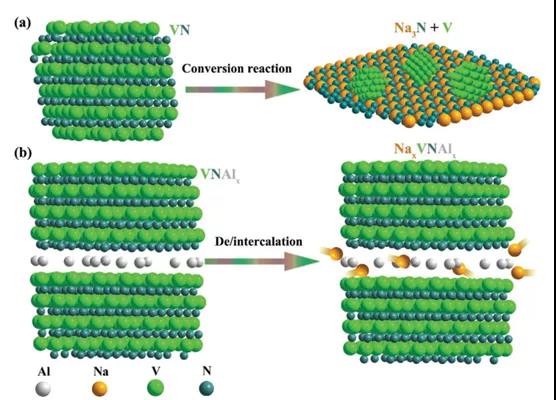
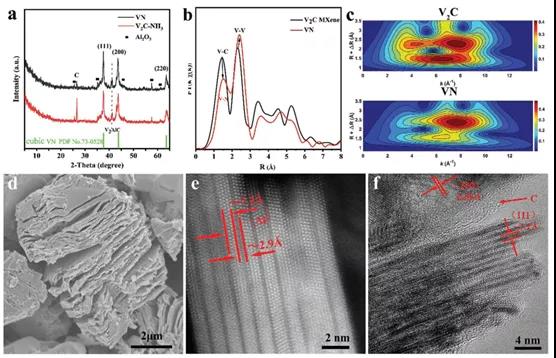
Figure 1. Comparison of two different types of VN. a) Block VN with conversion reaction mechanism. b) Al atom columnar VN has a delamination/intercalation mechanism
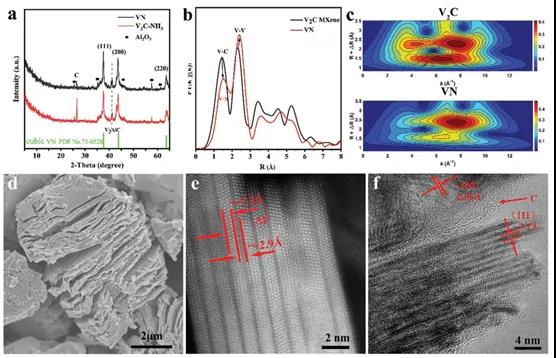
Figure 2. Structural characterization of VN prepared by V2CMXene ammoniation method

Figure 3. Electrochemical performance of VN and VN@rGO compounds on SIB

Figure 4. Kinetics of sodium ion behavior
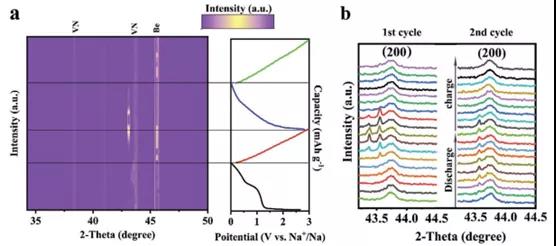
Figure 5. Structural evolution analysis of VN anode
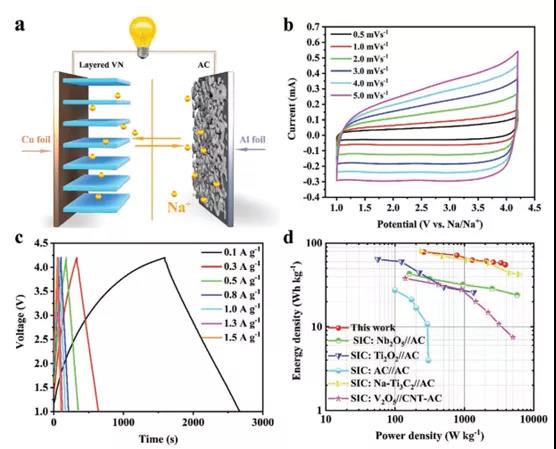
Figure 6. Sodium ion hybrid capacitor performance

This article reports a new type of layered VN, which is synthesized by V2C MXene ammoniation for high-performance Na+ storage. As a unique layered anode material for SIB, it can provide a high capacity of 372 mA hg-1 at 50 mA g-1, has excellent rate performance and long-term cycle stability, and has no capacity degradation during 7500 cycles , The specific capacity is 115 mA hg-1 at 500 mA g -1. Performance can be further enhanced by compounding with reduced graphene (VN @ rGO). These advanced properties can be attributed to the unique layered structure with aluminum atoms as pillars and coated with carbon. VN has excellent metal conductivity and intercalation mechanism, which helps to relieve Na+ in the interlayer spacing and form a stable Na+ intercalation structure. In addition, the storage mechanism is a feature of intercalation pseudocapacitance, which is different from traditional rock salt VN. Based on this layered VN, combined with AC, an excellent hybrid power device can be constructed. This unique VN design points out a new direction for other metal nitrides in the field of energy storage.
Literature link:
https://doi.org/10.1002/aenm.201903712
Information source: MXene Frontie
This information is from the Internet for academic exchanges. If there is any infringement, please contact us and delete it immediately
- Previous: Nanoscale: Bio-inspire
- Next: MXene breakthrough: Na


 mxene academic
mxene academic
